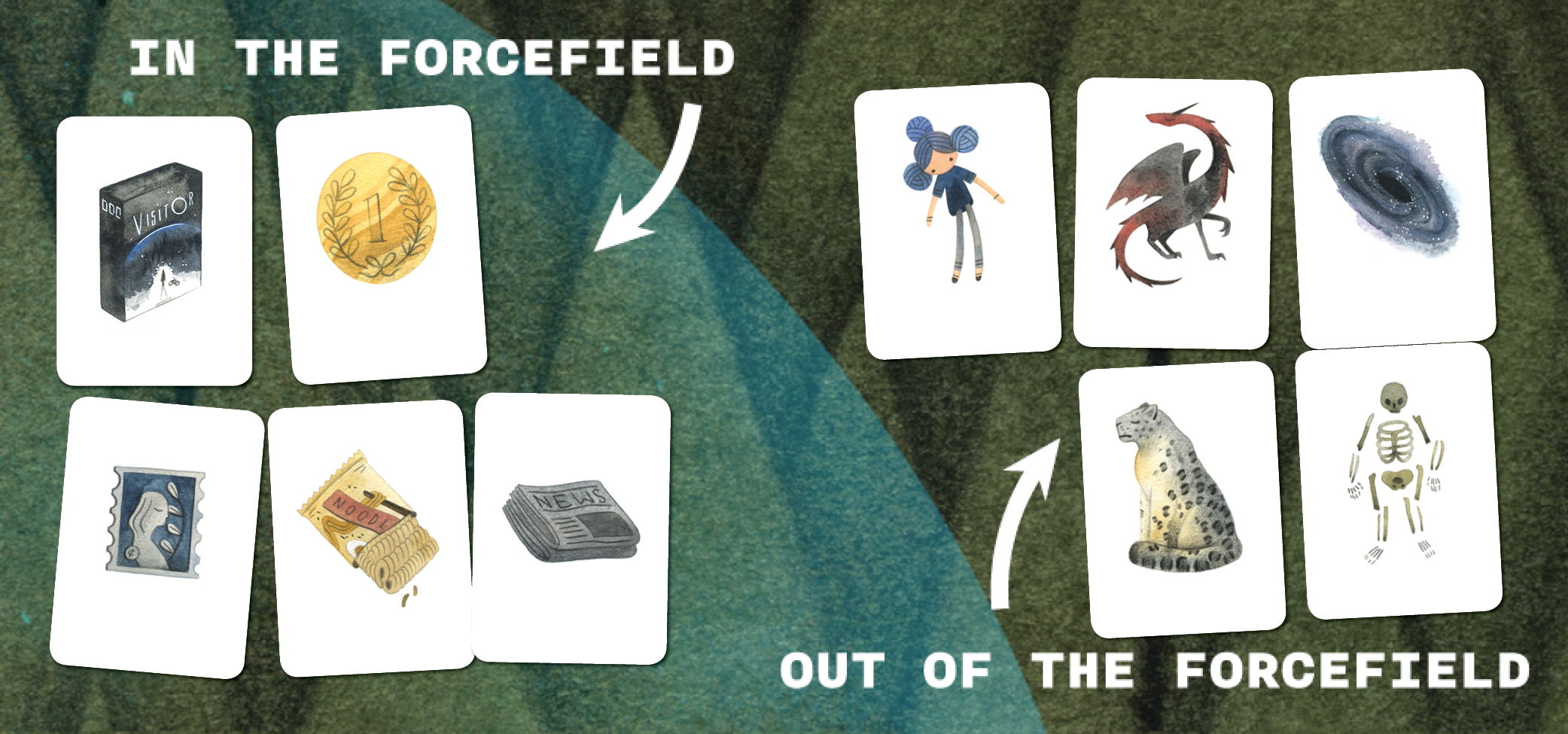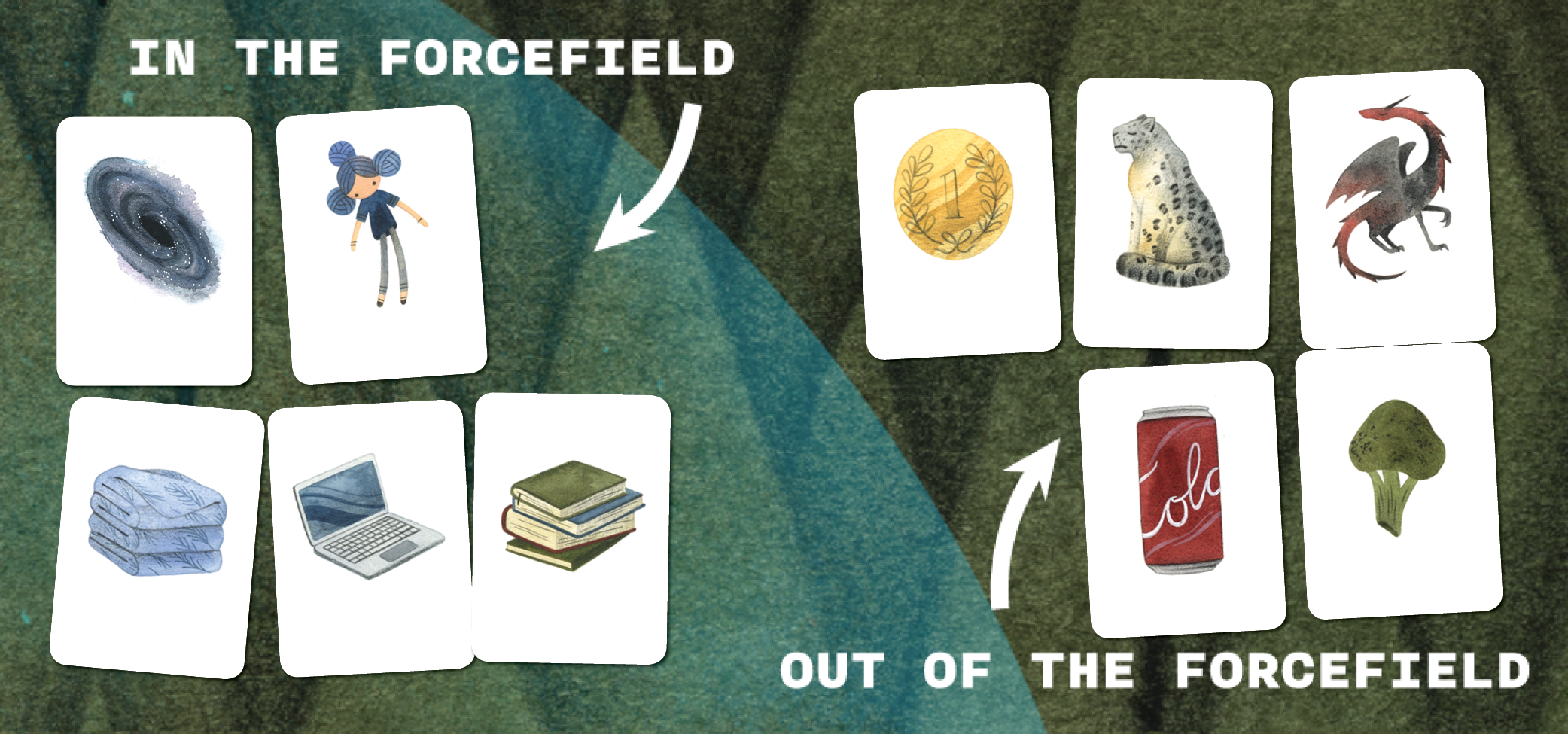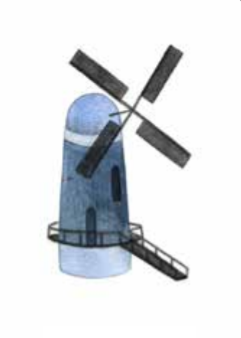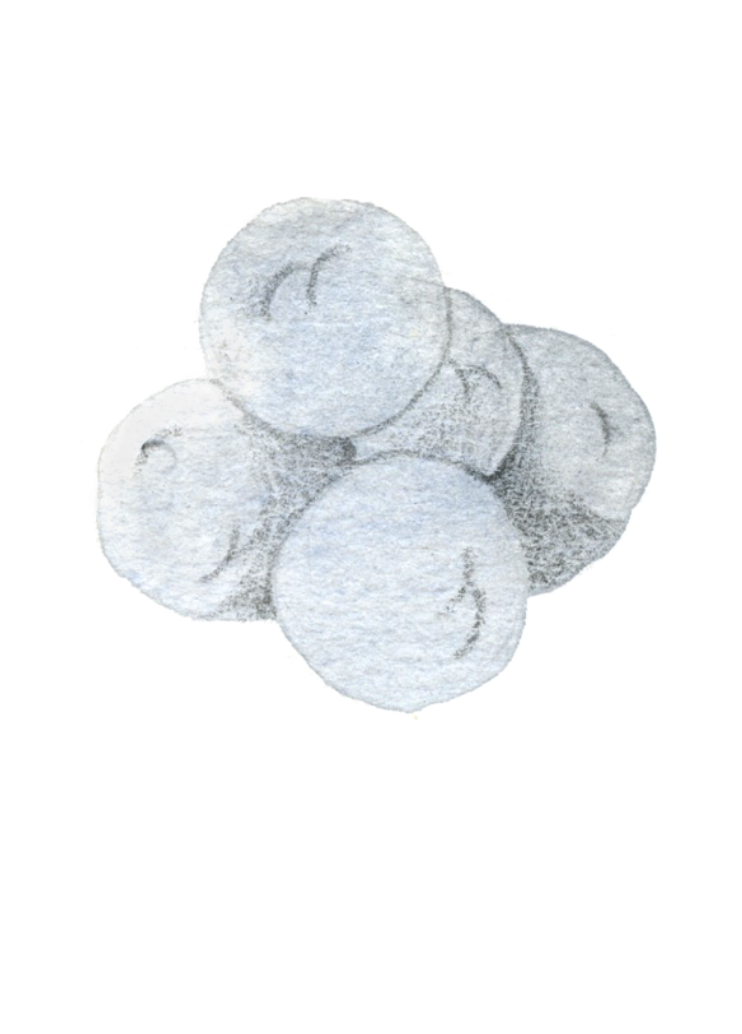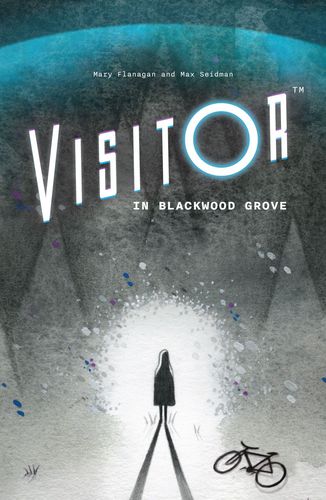As part of our May Spotlight on Visitor in Blackwood Grove, we strive to inform readers of little extra tidbits surrounding the game. Games are made by people, and one of those tidbits we enjoy is learning a little bit more about the people behind them. Some designers shy away from the public stage, while others enjoy being front and center.
In the case of Blackwood Grove, the fact that designers Max Seidman and the veteran Mary Flanagan are always eager and excited to discuss their passion for gaming should hardly come as a surprise. Following their resolute desire not just to bring new games to market but to have those games behave in thematic and / or mechanical ways that are heavily under-served (even within the confines of the game’s genre), this design team always has a story or two about that process along the line. Sometimes it’s an anecdote about the inspiration behind a game. Sometimes it’s about it’s development. Sometimes it’s feedback on a finished product out in the wild.
That’s Resonym for you: a bonus story with every purchase!
To that end, we were able to get both Max and Mary in the same area briefly to pool their thoughts on their latest creation for our benefit, and we’re here to share that with you today. Because of how much their answers play off one another, it can almost feel like they’re answering with an otherworldly ability to read one another’s mind. So except where their thoughts diverged, we just decided to go ahead and channel their response as the entity known as Resonym.
It’s sort of like Pacific Rim, minus the giant mechs and kaiju roaming about. But otherwise, totally the same.
Round One Questions
CR: What was your Gateway Game?
Max: I come from Cambridge, Massachusetts, which is the home of the first game store to carry German games in the U.S. I had pretty early access to Settlers of Catan, which was quickly replaced by Puerto Rico as my introduction to modern board games.
CR: What was the last game you really enjoyed playing (besides The Visitor in Blackwood Grove)?
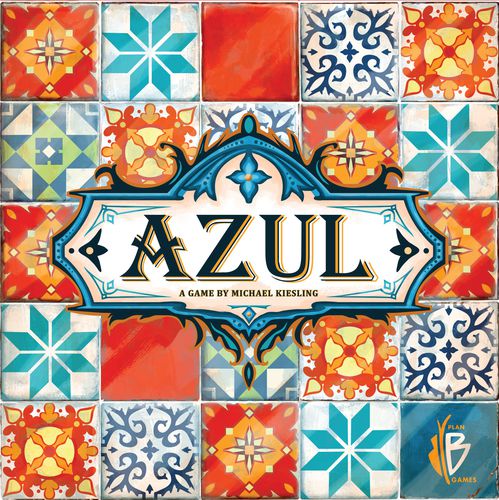 Mary: We both played Azul recently in different places and enjoyed it a lot! It’s both beautiful and mechanically excellent (of course, we’re not the only ones who think so, what with the recent SDJ nomination)!
Mary: We both played Azul recently in different places and enjoyed it a lot! It’s both beautiful and mechanically excellent (of course, we’re not the only ones who think so, what with the recent SDJ nomination)!
CR: How big is your game collection?
Max: Personally, I only have one shelf of games, and I only buy my very favorite games…but it’s cheating because Mary’s and Resonym’s collection of games is massive and takes up an entire wall (and it keeps expanding), so if I don’t have a game, chance’s are that Resonym does.
CR: What is your favorite type of game to play?
Mary: I like games with some element of cooperation. Growing up, I played a lot of card games, like Rummy and 500. These are still fun for me to play, but strangely I like deckbuilders too. My least favorite games are straight up dueling or battle games.
CR: How do you feel about Monopoly?
As Resonym: Many people don’t know that the original Monopoly (the Landlord’s Game) was created by Elizabeth Magie in 1904 to demonstrate how unfun it is to be a tenant of land grabbing landlords. I think it’s tremendously ironic that a game designed to not be fun and to critique capitalism has become such a massive economic success. Many people have enjoyed the game, and many with their families, so that says something about the power of play among families.
On The Visitor in Blackwood Grove
CR: Although Blackwood Grove utilizes aspects of hidden information, roles, and deduction, it doesn’t use deception like a lot of other social games. What was the original jumping off point of the idea for it?
As Resonym: Since its very first prototype, Visitor was always envisioned as an “inductive reasoning” game, in which players would have to go through the scientific process of making theories and trying to disprove them.
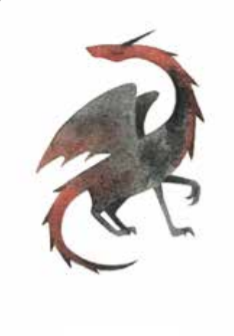 It was inspired by Green Glass Door and Zendo, which have similar logical elements but are more freeform experiences. Our goal was to keep the fascinating puzzles that players have to solve in Green Glass Door and Zendo, but to add structure to the game experience so that the player who comes up with the puzzle can also play – and win! -like in games such as Mastermind.
It was inspired by Green Glass Door and Zendo, which have similar logical elements but are more freeform experiences. Our goal was to keep the fascinating puzzles that players have to solve in Green Glass Door and Zendo, but to add structure to the game experience so that the player who comes up with the puzzle can also play – and win! -like in games such as Mastermind.
While Visitor and its inspirations all have both inductive and deductive reasoning, we consider this type of game an entirely different genre from games like Werewolf and Secret Hitler, which is why we call it an “induction game.” We wanted to create a less accusatory atmosphere than these games that feel like witch hunts.
CR: Much of the trick to the game as the Visitor is coming up with a Pass Rule that you think your teammate (The Kid) will be able to guess before the other players. What sort of general guidelines do you subscribe to when making one? And how does that differ between new players versus experienced ones?
As Resonym: Our strategy is to come up with the hardest Pass Rules we can that can still be solved in 8 rounds! The game is designed so that at the start, the Agents have the advantage (more information, etc.) but by the end of the game the Kid has more information and power. If you make a Pass Rule that’s too easy, the Agents will very likely figure it out, but if you make one that’s nice and hard and the game progresses, the Kid should be the one to get enough information to win. Of course, it’s easy to say “come up with the hardest Pass Rules that can still be solved in 8 rounds” but much harder to actually do it.
One nice thing about Visitor is as your group gets better at the game, you can make much harder Pass Rules. We’ve seen that “things that contain the color red” is a hard Pass Rule for new players, while a hard pass rule for experienced players could be something more like “things you you can fold without damaging.”
CR: Did you experiment with more restrictive Pass Rule rules?
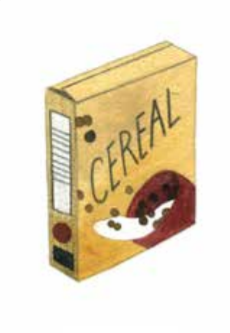 As Resonym: Initially all that mattered was the name of the object, and Pass Rules were things like “contains 3 consonants in a row.” It worked, but wasn’t super fun. When we decided to make the move to making Pass Rules about concepts and objects instead of words, we considered putting more restrictions in place.
As Resonym: Initially all that mattered was the name of the object, and Pass Rules were things like “contains 3 consonants in a row.” It worked, but wasn’t super fun. When we decided to make the move to making Pass Rules about concepts and objects instead of words, we considered putting more restrictions in place.
One of the most interesting elements of the many inductive reasoning car-ride games (games that don’t have any components) is that to solve them you have to think out of the box. Adding constraints like “the Pass Rule has to be about color, size, material, or cost” just removes that fun out of the box thinking element (not to mention reduces replayability).
In short, the game relies on asymmetry to get rid of the need for restrictions, because if the Visitor makes a Pass Rule that’s too hard or bizarre, they’ll simply lose!
CR: Not only is Visitor designed to be language independent from a rules & flavor perspective, but it’s also interesting in that the gameplay itself isn’t heavily reliant on language at all. What was that experience like to incorporate into the game?
As Resonym: Visitor can be played almost silently (it rarely is, but it can be!), and this is actually a happy accident. For example, we knew we wanted a clear indication to the players which objects pass the Rule, and which don’t, so we introduced the Forcefield Board; objects that pass the rule go on the board, objects that don’t pass the rule stay off the board. This means that the Visitor never needs to say “yes” or “no,” she can silently put the object card that an player is testing on the board.
Similarly, we knew that we didn’t want players to try to prove that they knew the Pass Rule by saying it aloud. For example, the Pass Rules “things that cost more than $1,000” and “things that cost more than $2,000” will end up categorizing objects almost identically, but are phrased differently. We want players to win once they have grasped the concept of the Pass Rule, so we made the guessing process involve proving that you know which objects will pass the Rule, no words involved. This means, once again, that players don’t need to speak.
All of these mechanics came together with the narrative that the Visitor doesn’t understand human language, which also explains why the Pass Rule can’t be about the names of the objects. On a side note, the Pass Rule can be about human culture (for example, how much things cost), so we like to imagine that the Visitor spent the trip to earth watching old earth TV shows picked up from radio waves.
CR: What’s the most clever (successful) Pass Rule that you’ve heard of?
As Resonym: Oh, I’ve tried plenty of “clever” Pass Rules, but most of them were too hard, so not that clever at all! I really like one of our backer’s Rules from the Kickstarter campaign: “Things with/where you would eat green eggs and ham,” but it’s hard to pull off in the actual game where you can’t sift through the deck to make your Rule. I have to pander and go with your group’s rule of “Things that a Suburban dog might find in a dumpster.” I don’t think I’ve ever done one quite that specific that people have actually guessed!
CR: How did you decide which depicted items were included in the game? And were there any that come to mind you decided to remove during playtesting for one reason or another?
As Resonym: First we devised a bunch of very different sample Pass Rules. Then we came up with a large set of objects that was divided down the middle by each of the various rules! For example, there are a lot of big things and a lot of small things. There are a lot of things that have the color blue, and a lot that don’t. But we also wanted beautiful and funny objects, so we had to put other objects into the list, like the Visitor in Blackwood Grove game itself!
Initially, we planned to put names on all of the object cards, but our backers on Kickstarter pushed for art-only cards. We’re really happy with the result of art-only cards, but we found that a few of the objects were hard to recognize without labels on the cards, for example, the snowballs.
CR: As much as we’d like to ensure the Visitor finds their way home, their special forcefield power is pretty cool. If you had that technology, what would you do with it?
Max: There would be so many practical uses! TSA could screen baggage for weapons instantly! Use it to filter spoiled food from good food. I think I would use it as a way to know which people are malicious and selfish and I shouldn’t trust… which gets very dystopian very quickly. In the end I think this technology is best kept out of the hands of adults, no matter how well intentioned!
Mary: I’d definitely let coffee pass through the forcefield.
CR: Ok, before we go, we have to know: which movie springs to mind first when thinking about the game – E.T. or Flight of the Navigator?
 Max: I have to admit that Stranger Things and The Iron Giant jump to my mind first, and I haven’t even seen Flight of the Navigator.
Max: I have to admit that Stranger Things and The Iron Giant jump to my mind first, and I haven’t even seen Flight of the Navigator.
Mary: E.T. is a big influence. But so was my childhood. I always thought I saw spaceships flying in the night sky.
CR: Finally, what’s next for Visitor in Blackwood Grove?
As Resonym: Over the past few months we’ve been gearing up for Visitor’s release, and we’re super excited to finally announce: the game will be available to the public starting in August! You’ll be able to buy Visitor in Blackwood Grove exclusively at Target. You can read the full announcement here.
The Visitor in Blackwood Grove is a remarkable language-limited game that plays quickly but is concise, incredibly accessible, and pretty short. As with many games based around trying to convey information to other players without the use of language, much of its entertainment value and replayability is based around the memorable moments when your efforts pay off successfully or fail spectacularly.
To that end, we have our own message for you pertaining to some fun news about not having to wait ill August to get a copy. Of course, since it’s all about pictures, we’ve decided to convey that information to you via pictures:


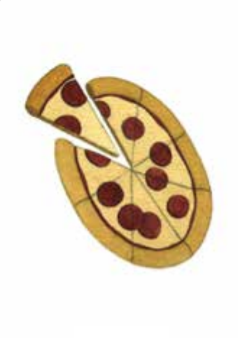
See if you can figure it out. Then scroll down to see the answer.
We’re just messing with you. There is no message. But we do have a contest you can enter. Click on through!
Photo Credits: Visitor cover and photos by Resonym.

